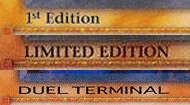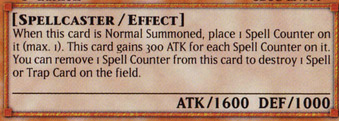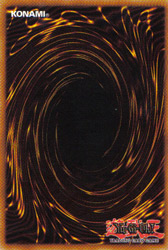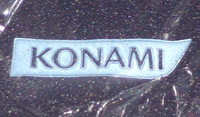

While the Yu-Gi-Oh Trading Card Game is a game, it's important to remember that it is still a collectible. As with any other collectible items, where there is a demand there are people who will fake it just to make money.
The following guide is here to help you steer clear of the fakes so that you get your money's worth when purchasing or trading for cards. Please note that this is a guide for identifying TCG cards, as there are some differences between TCG (international) and OCG (original Japanese) cards.
One of the keys to collecting anything is to know exactly what it is you're buying. The simplest way to not get ripped off by buying fake merchandise is to do your research.
As far as this game goes, know your cards.
Know the name of the card you are interested in and it's particular stats {e.g. Attribute, Level or Rank (number of stars), Type, ATK, DEF, etc.}. Don't forget that there are a limited number of real Attributes and Types. Check the homepage to see a list of Attributes and Types in the game. A lot of times, cheaply made fakes will get this fundamental stuff incorrect. Names will be incorrect, statistics might be incorrect, or the picture doesn't match (see "Misprints & Production Mistakes" below for exceptions).
There are plenty of resources on the internet, such as this website, that will display pictures of the real cards. Use these to your advantage and know what you're buying if you're unsure about something being legitimate. Usually, with very little research, the fakes will stand out like a sore thumb.
If just glancing at card images isn't enough, the following details should help you notice the small things that separate the real from the fake.
One of the things fakes get wrong most often is the actual font used in the text of Yu-Gi-Oh! cards. First, here's an example of a card name:
![]()
All Yu-Gi-Oh! cards use this font, accept no substitute. The other feature of card names to note is the use of small caps where one would normally use a lowercase letter. If you see a lowercase letter in a card name, the card is a fake.
This also applies to a card's listed Type:
![]()
Types, like card names, use this same font and are always inside of brackets and the words are separated by a forward slash ( / ).
The other place where this font applies is the listing of a Monster Card's ATK and DEF.
![]()
ATK and DEF are always listed in all capital letters, then a forward slash between the letters and the value. If the value of a Monster Card's ATK or DEF is less than 1000, there will be a space after the forward slash. When the value is 1000 or higher, there is no space.
The final font to check is the effect text of the card. Unlike the card's name, Type, ATK, and DEF, the effect text uses regular capitalization.
![]()
This is an example of what the effect text looks like. It is the same on all cards, whether they are Effect Monsters, Spell Cards, or Trap Cards.
When it comes to Normal Monster Cards, the text is referred to as "flavor text". Flavor text, while using the same font, is always in italics.

If you have a Normal Monster Card who's flavor text is not in italics, it is a fake. There is one exception to that rule, and that is the handful of special Kazuki Takahashi art cards that are Normal Monsters. Those cards will use the same font as Effect Monsters and are identified as having no border on their artwork. The artwork on those cards is also signed by Kazuki Takahashi himself, signed as "Kaz".
Another easy identifier of fake cards is the use of incorrect symbols.
The first thing we will discuss is the Attribute of a card, which should be located in the top right of a card next to it's name.
![]()
Above is an example of the different Attributes in this game, as well as the symbols for Spell and Trap Cards. In order of appearance in the picture is LIGHT, DARK, FIRE, WATER, EARTH, WIND, DIVINE, SPELL, and TRAP. Note how the English words for the each Attribute are overlayed on the symbols and are all in capital letters. Older sets will use the word MAGIC instead of SPELL, something that will be discussed later.
![]()
Another key symbol to look at are the stars for the Level or Rank of a Monster Card. The first star in the above picture is an example of a Level star. The star should be a five-pointed yellow star with a red-orange circle around it as seen. An important feature of the Level star is that the top, right, and bottom right points are obscured partly by the red-orange color of the circle. Fakes commonly get this feature wrong, either by forgetting to obscure the points or by obscuring the wrong points. The Level stars are also shaded to look like spheres, with the shadow being on the right side of the sphere.
The second star in the above picture is a Rank star. Just like the Level star, a Rank star is yellow, but this time it is on a black circle. The other difference is that a Rank star has no obscured points. Rank stars are also slightly shaded, with the darker part of the circle on the right side. Rank stars should also only appear on Xyz Monsters, the cards with the black space background, as all other Monster Cards will use the Level star.
Neither of these stars should appear on Spell or Trap Cards.
Now let's discuss the layout and general design of legal Yu-Gi-Oh cards so you can identify the fakes.
The most basic card design feature of Yu-Gi-Oh! cards are the rounded corners.
![]()
The above picture shows how Yu-Gi-Oh! cards are cut on the corners. All real cards have these rounded corners. Any card that don't have rounded corners are fakes, as well as any cards where the corners are rounded off too much. The above picture is approximately to scale (may not be 100% exact) so should be a good example to judge.
As long as we're talking about the scale of the cards, an official Yu-Gi-Oh card measures approximately 2 5/16 inches by 3 3/8 inches (5.87375 cm by 8.5725 cm). For an easier visual comparison, Yu-Gi-Oh cards are slightly smaller than standard poker sized playing cards.
Next we move onto the actual card layout.
Starting at the top of the card should be the card name with it's Attribute symbol to it's right. Both of these should be inside an embossed box. The embossing makes this box look like it's projecting from the background.
Below this box on Monster Cards should be it's Level or Rank stars. No Monster Card has less than 1 star or more than 12 stars. Level stars should have a right alignment and progress to the left the more stars there are. For Xyz Monsters which use Rank stars, the stars should have a left alignment and progress to the right the more stars there are.
When it comes to Spell or Trap Cards, this area has either [SPELL CARD] or [TRAP CARD] aligned to the right side as in the picture below.

Some Spell and Trap Cards have additional symbols inside the brackets along with the words SPELL CARD or TRAP CARD. These symbols are shown below:
![]()
As mentioned above in the "Yu-Gi-Oh! Symbols" section, older booster packs and use the word MAGIC instead of SPELL. Starting with the Magician's Force set, all Spell Cards were changed to use the word SPELL instead of MAGIC. You can check the homepage to see the list of booster packs which preceded Magician's Force so you know which sets still used the word MAGIC on cards.
Moving further down the card, below where the stars are or where it would say [SPELL CARD] or [TRAP CARD] is the actual card artwork. The card artwork should be centered on the card and should be inside of a greyish border that has a bevel on it (looks 3D) with squared corners.
![]()
The exception to the border rule is the previously mentioned special artwork cards signed by Kazuki Takahashi. In those cases, the artwork on the cards will actually extend a bit further, covering up the area normally used by the border.
Unfortunately this guide cannot tell you if the artwork is fake artwork or the real thing as there are far too many cards to discuss. As was stated above, you need to do your research on the card you are buying or trading for and check out what the artwork looks like yourself. Most cards have a single artwork and a quick internet image search will show you all you need to know. Some cards will have multiple versions of artwork, but again a quick internet search will display all the various versions a card will have. Another important thing to look out for concerning the actual artwork is blurry or a bad quality artwork. Those are also signs of a fake.
As you're checking the artwork, if this card has any holofoil, you can spend this time looking at the pattern on it. If there are star shaped patterns on the card, that's a dead giveaway that it's not authentic.
Now that we've covered the actual artwork, the next things to check are right underneath the artwork in the space between that and the box for the effect text. Under the left corner of the artwork in this space, it can say LIMITED EDITION, 1st Edition, DUEL TERMINAL or nothing at all (which is known as Unlimited Edition). Here is what those first three look like:

Make sure that LIMITED EDITION is in all capital letters, just as it is in the picture while 1st Edition has normal usage of lowercase letters. Make special note that the "st" in 1st Edition is smaller than the rest of the text and is at the top of the line instead of the bottom. The font for LIMITED EDITION and 1st Edition is in the same font you've seen repeated throughout the card already. DUEL TERMINAL cards use a different, more plain font and is in all capital letters. Again, when a card is an Unlimited Edition, this spot should be left blank.
Now on the opposite corner of this space is one of the most important markings on the card, the set identification number. This number lets you know which specific booster pack, tin, or box the card is originally from, as well as it's number in that set. On the real thing, this number is actually a set of 2 numbers/letters separated by a dash.
The left side of the number is typically 3 or 4 letters and/or numbers and represents the set itself. Older set used 3 letters and/or numbers and newer sets tend to use 4 letters and/or numbers. No set uses just numbers on the left side of the dash, although some will use just letters.
The right side of the dash represents where in a set that card belongs. In the oldest sets, this number was usually just a 3-digit number between 000 and 100 (or however many cards were in that particular set). Later on, they started identifying the language of the set by a 2 letter abbreviation before the 3-digit number (EN for English, JP for Japanese, etc.). Some cards are from a Special Editions or Sneak Previews of a set, so after the language identifier, they will have the letters SE or SP respectively. When this is the case, there is only 1 number afterwards.
In case this is all confusing to read, here are 3 examples of what this all looks like.

Basically, the format for TCG English cards would be XXXX-EN001, or XXXX-ENSP1 for a Sneak Preview card, XXXX-ENSE1 for a Special Edition card.
To see examples of set letters, the homepage has all the official set abbreviations listed next to their matching booster or box.
Beneath the set identification number and the edition print, you will find the box containing the effect text. This box has a red-orange border with small red-orange squares in all four corner. At the bottom of the effect text box will be a thin black line that doesn't touch the border that separates the effect text from the ATK and DEF of a monster. Spell and Trap Cards do not have that line or ATK and DEF listed.
Here is an example of a typical Effect Monster's effect box:

The text inside the effect box should be black, and the background of the effect text box should be a lighter version of the card's main background color. In newer sets, this background is lighter than in older sets.
Underneath the effect text box are two more items that all cards should have.
On the right side of the card should be printed ©1996 KAZUKI TAKAHASHI in all capitals. The year will say 1996, no matter when the card was made.
On the left side of the card in this same space is an 8-digit serial number (there will be no letters here).
Both these marks can be seen on the picture below.
![]()
One thing to note here is that not all cards have this 8-digit serial number, although a majority of cards do have one.
The final marking on the front side of the card to prove the card is real is the holographic sticker in the bottom right hand corner of the card. It is a little shiny gold or silver sticker, that when viewed from different angles should show two different images. At one angle, it should display a repeated pattern of the word YU-GI-OH! Every other line should be upside down. At the other angle, you should see an eyeball symbol repeated over and over again in a pattern (knows as the Eye of Wdjat).

As stated before, there are two different colors of this sticker; a gold version and a silver version. Both the Limited Edition and 1st Editions of cards will carry a gold sticker. Unlimited Editions will use the silver one.
The color of the cards are also important and should tell you what kind of card it is at a glance.
Here is a quick color listing to match up to your suspected fakes:
| Card Type | Card Color | Tile |
|---|---|---|
| Normal Monster | Yellow |  |
| Effect Monster | Orange |  |
| Ritual Monster | Blue |  |
| Fusion Monster | Purple |  |
| Synchro Monster | White |  |
| Xyz Monster | Black Space |  |
| Spell Card | Tuquoise |  |
| Trap Card | Pink |  |
Finally, all Yu-Gi-Oh cards have a grey border around the edge of the card. It should be about the same color grey as the border on the artwork with patchy light and dark areas.
Although the corners of the card are rounded, the inside corners of the border should be perfectly square and the border should be about 1/16 inch thick (1.5875 mm).
Though there is much less to the back design than the front, it is no less important to check to identify a fake card.
First and foremost is the general pattern of the card back.

The card back is a dark orange swirl resembling fire that leads to a black oval in the dead center.
The border of the card back is orange and slightly thicker than the border on the front of the card. It is slightly lighter orange along the very edge.
On the top left corner of the card should be the official Konami logo in plain white.
![]()
Make sure it has the ® (Registered Trademark) next to it as seen in the picture.
On the bottom right hand corner of the back is the official Yu-Gi-Oh! logo as seen here.

It needs to say TRADING CARD GAME in all capital letters and after the exclamation point in Yu-Gi-Oh!, it need to have ™ (Trademark) next to it as shown.
That's all there is to the back of the card, but these marks are just as important as any others in identifying your fake versus real cards.
While not easy to fake themselves, products such as Collectors Tins or Structure Decks can easily be tampered with. People often break into these things when they are on store shelves, take the valuable cards from them, and return them back to be sold to unsuspecting people.
For Collector Tins, Konami uses a special plastic shrink wrap. When intact, this plastic wrapping proves that the product hasn't been tampered with and contains all the cards it should. Here is an example of the Konami labeled plastic:

While it might be hard to tell in the picture, this is a clear plastic, although the logo should be opaque white. This plastic is very hard to reseal correctly, so if you find a tin where the plastic isn't there or sealed badly, that's a sign it's been already opened.
As for Structure Decks and other packaged products, just make sure all the seals are closed properly before buying them. Check the packaging to make sure nobody has opened them and reclosed them before you got there.
As the old saying goes, nobody's perfect. This saying extends to Konami and Yu-Gi-Oh! as well, so inevitably there will be misprints and production mistakes that may make a card look like a fake, but in actuality it's a real thing. There may be an error on the production plate that wasn't caught in time for the first release, or perhaps the machine became offset during a run of cards. Either way, these things happen.
Here we'll take the time to discuss some of the more common types of mistakes in hopes that if you do come across them, you won't think your card is a fake and toss it in the trash.
Incorrect Information: Every so often, the information on the printing plate is flat out incorrect. These can be as simple as typos, or the stats of a monster that aren't correct. Usually these mistakes are caught beforehand and the printing plate with the error is destroyed. However, though simple human error, mistakes get overlooked. When they are found out afterwards, they are usually corrected in the next run of a card, but by then it's too late and these leak into the public.
Spelling Errors: Similar to incorrect information being on a card, human error does result in typos and plain old forgetting to spell check. Again, the mistake will be overlooked during the initial run of a printing plate and a card gets printed with something spelled wrong. If the error is small enough, it isn't worth making a new printing plate and they'll use the plate with the mistake anyway.
Missing Card Names, Text, or Artwork: Just like with your home printer, the massive printers used to print the cards can run out of ink at any time, including in the middle of printing a sheet of cards. Usually the sheets with the missing text or artwork are discarded, but they sometimes wind up with the good cards and are cut and packed like normal.
Misaligned Text: The printing plates in the machines doing the printing have to be aligned perfectly, but just due to being used over and over again, some of the printing plates can move by accident and the alignment is off. Since the machines are hard to stop once they get going to be recalibrated, the machine will finish a whole run with the text in the wrong spot. Just like with ink related problems, these should be discarded but some get released anyway.
Badly Cut Cards: Similar to the text being misaligned, the machine that cuts the cards to size also need to be constantly adjusted so they cut the cards correctly. It's inevitable, though, that the machine misses it's mark and cuts the cards in the wrong spot, either creating a card that has the edges of other cards on it, or even a card that is cut too small on a side, so part of the card is missing.
Mismatched Cards: Due to the way the printing process works, the sheet of cards are printed with several different plates. On occasion, the printing plate are in the wrong place, and the information or artwork meant for one card is printed on the wrong card. This includes things like cards having the wrong name, the wrong artwork, or having the foil for a different card rarity. A card might have the foil on the name or artwork for a rarity it wasn't released in, or might be lacking foil when it should have some.
Print Test Cards: To make sure all the printing plates are aligned right and the ink is printing in the right spot, a test sheet needs to be printed first to avoid some of the above production errors. These sheets of cards shouldn't be cut and packaged, but it happens. These errors will result in cards that are just stripes of the 4 standard print colors, cards with nothing printed on the front, cards with nothing printed on the back, or cards that only have text or artwork, but blank otherwise.
So what do you do if you have one of these misprints or production mistakes? For one thing, you can just use the card. As long as it's not so bad that you still know what you're playing, use it until you can replace it with a good version. Just make sure that if you do use a misprinted card, you know the statistics it should have, as the card's information will be incorrect which will effect it's game play.
Another thing you can do is use the card for pure collection sake. Put it on display in your card binder and enjoy owning a bad card. Some collectors actually seek out and will buy or trade for misprints, giving them some sort of value, so if you don't want them, someone probably will (with the exception of the Print Test Cards).
In general, it will be easy to tell the difference between the cards with errors and fake cards as the fake cards will probably be identified before you even get to this section.
However, if you have read this entire guide and checked your card and are still unsure if it's legitimate, don't worry. You can always log onto the Yu-Gi-Oh! Card Guide Forums and ask. There will be plenty of members there willing to help you separate the real thing from the fake.
Thanks for reading and hopefully you are now better equipped to spot the fakes.